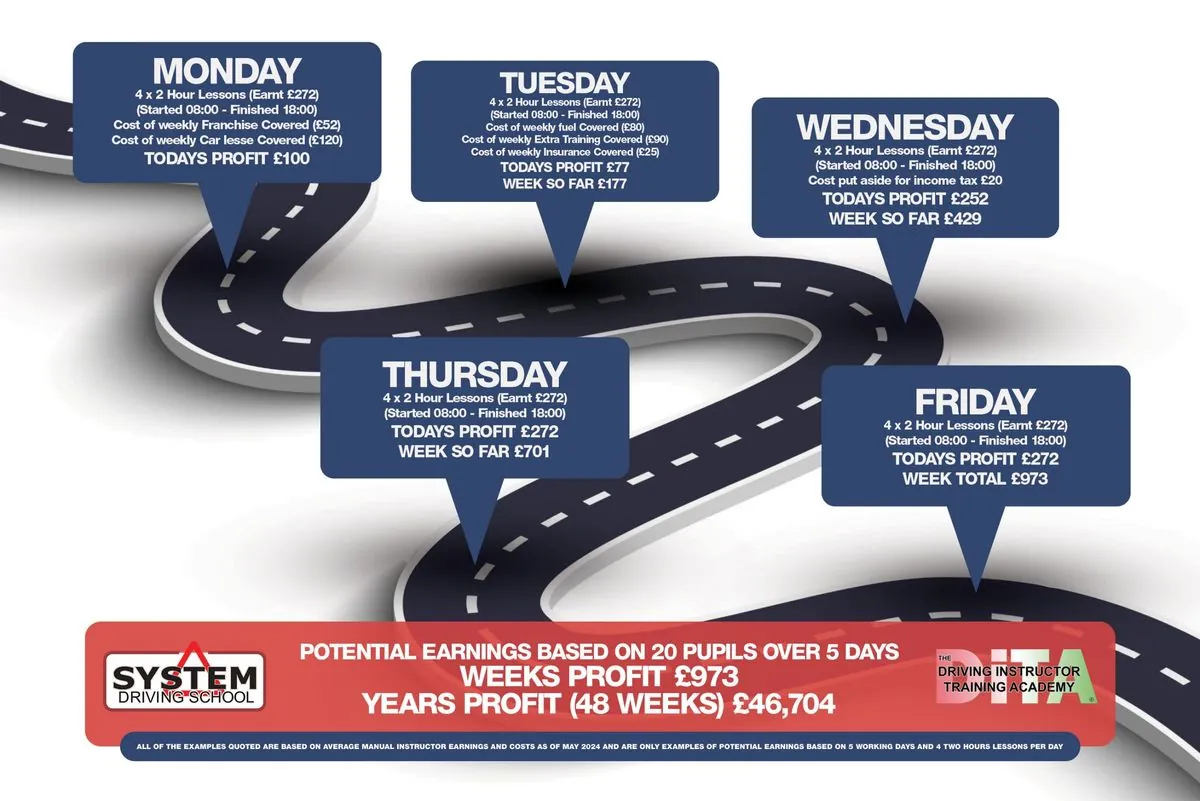The Financial Reality of Being a UK Driving Instructor in 2024
Explore the earnings potential and challenges of driving instruction in the UK. While lucrative for some, the profession faces hurdles like cancellations and market shifts towards automatic vehicles.

In 2024, the profession of driving instruction in the UK presents a mixed picture of opportunities and challenges. With lesson rates often exceeding £50 per hour, the financial appeal is evident. However, the reality is more complex than the surface-level attractiveness suggests.
Approved Driving Instructors (ADIs) can potentially earn well, with 40% achieving weekly earnings of £1,000 or more. This places them comfortably in the higher-rate taxpayer bracket. The National Careers Service reports an average annual salary of £31,000 for driving instructors. However, these figures don't tell the whole story.

The income of an instructor is highly variable, depending on factors such as location, reputation, and ability to secure consistent bookings. While experienced instructors with a solid client base can thrive, many others struggle with the unpredictable nature of the job.
One of the most significant challenges is maintaining a steady income. Berisford Jones, a former driving instructor with 25 years of experience, highlights the difficulties:
"To get 40 hours of tuition paid in a week is not easy. Commuting between jobs can easily take you 30 minutes or more. Short-notice cancellations come thick and fast – getting paid for a cancellation is nigh-on impossible and generally results in the loss of a client."
Instructors must decide between working independently or joining a franchise. While franchises offer benefits like a dual-control car and marketing support, they come with significant weekly fees, often ranging from £60 to £150. Independent instructors avoid these costs but must handle all aspects of the business themselves, including finding clients and maintaining their vehicle.
The path to becoming a qualified instructor is rigorous and costly. Aspiring ADIs must pass three exams, with the main practical test having a pass rate of only 25%. The process, including training and tests, can cost between £1,753 and £3,253.
Looking to the future, the profession faces potential challenges. The number of young adults holding driving licenses has halved since the 1980s, with fewer than 25% of 17-20 year olds currently licensed. The average age for passing a driving test has increased to 26-27 years old in 2024.
The shift towards electric vehicles is also impacting the industry. The AA Driving School predicts that by 2026, over 25% of practical driving test passes will be in automatic vehicles. This trend could potentially reduce earnings for instructors, as automatic-only lessons typically require fewer hours of instruction.
Despite these challenges, job satisfaction remains high. A DVSA survey found that 91% of instructors believe their role provides a sense of personal accomplishment. The profession continues to play a crucial role in road safety and mobility, with the UK boasting one of the most comprehensive driver training systems globally.
As the industry evolves, adaptability will be key for driving instructors. Those considering this career should carefully weigh the potential rewards against the challenges, understanding that success often depends on building a strong reputation and client base in an increasingly competitive market.


































